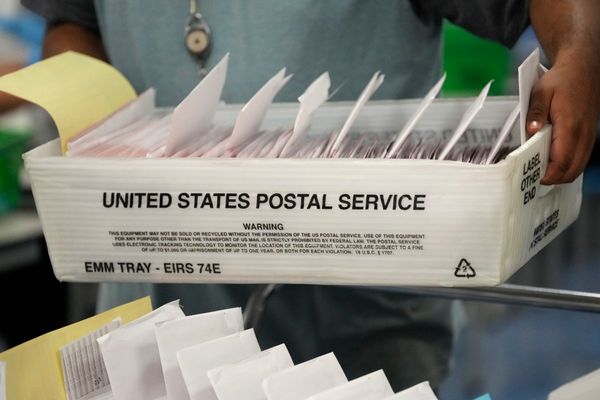
A newly engineered camera that can capture 4.8 million frames per second has been developed – at a fraction of the cost of its commercial contemporaries.
Scientists in Canada found a way to take blur-free images of ultrafast movements using off-the-shelf components which reduce its price tenfold in comparison to similar cameras already in use.
They used ‘time-gating’ methods to capture high-speed movies of scenes in an incredibly narrow timeframe.
The researchers hope their invention could soon be used in biomedicine and to improve hazard-sensing technology for use in things like driverless cars.

The study, published in the journal Optica, set out to find a way of capturing blur-free images of ultrafast movements – such as falling water droplets or even molecular interactions – in a cost-effective way.
Currently, capturing ultrafast scenes such as these requires expensive camera equipment – which can cost upwards of an astronomical $100,000 (£80,000).
Ultrafast imaging can be used for a wide range of applications, including the real-time monitoring of drug delivery or high-speed lidar systems used to detect hazards in the surrounding areas for driverless cars.
The research team, from the Institut National de la Recherche Scientifique (INRS) in Canada – together with collaborators from Canada’s Concordia University and Meta Platforms Inc. – developed a diffraction-gated, real-time ultrahigh-speed mapping (DRUM) camera that can capture a dynamic event in a single exposure at an incredible 4.8 million frames per second.
The team demonstrated the capabilities of their DRUM camera by capturing the lightning-quick dynamics of femtosecond laser pulses interacting with liquid and laser ablation in biological samples.
Cameras used for similar imaging currently on the market can be both expensive and highly complicated, and their performance can be limited by trade-offs between the number of frames captured in each movie and light throughput or temporal resolution.
To overcome this obstacle, the researchers developed a new ‘time-gating’ method known as time-varying optical diffraction.

Cameras use gates to control when light hits the sensor; for example, in traditional cameras, the shutter is a gate that opens and closes once.
With time-gating, the gate is opened and closed in rapid succession a number of times before the sensor begins to read out the image, capturing a short, high-speed movie of a scene.
Dr Jinyang Liang, an Assistant Professor at the INRS, discovered a way to accomplish time gating using light diffraction by considering the space-time duality of light.
Dr. Liang and his team realized that rapidly changing facets on a diffraction grating could present a way to sweep through different positions to gate out frames at different times.
Dr. Liang and his team then turned this idea into a working camera, requiring a multidisciplinary team that brought together expertise in areas such as physical optics, ultrahigh-speed imaging and MEMS (Micro-electromechanical) design.
“Our camera uses a completely new method to achieve high-speed imaging,” Dr Liang explained.
“It has an imaging speed and spatial resolution similar to commercial high-speed cameras but uses off-the-shelf components that would likely cost less than a tenth of today’s ultrafast cameras, which can start at close to $100,000.
On the construction of the cameras, he added: “Luckily, it is possible to accomplish this type of swept diffraction gate by using a digital micromirror device (DMD) — a common optical component in projectors — in an unconventional way.
“DMDs are mass-produced and require no mechanical movement to produce the diffraction gate, making the system cost-efficient and stable.”
The researchers created a DRUM camera with a sequence depth of seven frames – meaning it captures seven frames in each short movie – and used it to record laser interactions with distilled water.
The resulting time-lapse images showed the evolution of a plasma channel and the development of a bubble in response to a pulsed laser, with the measured bubble radii matching those predicted by cavitation theory.
They also imaged the bubble dynamics of a fizzy drink and captured interactions between an ultrashort laser pulse and a single-layer onion cell sample.
But Dr. Liang hopes the cameras could be used in biomedicine and lidar sensing technology used in things like driverless cars.
“In the long term, I believe that DRUM photography will contribute to advances in biomedicine and automation-enabling technologies such as lidar, where faster imaging would allow more accurate sensing of hazards,” he said.
“However, the paradigm of DRUM photography is quite generic.
“In theory, it can be used with any CCD and CMOS cameras without degrading their other advantages such as high sensitivity.
First author Dr. Xianglei Liu added: “DRUM photography may even be applied to nano-surgeries and laser-based cleaning applications.”
Produced in association with SWNS Talker







